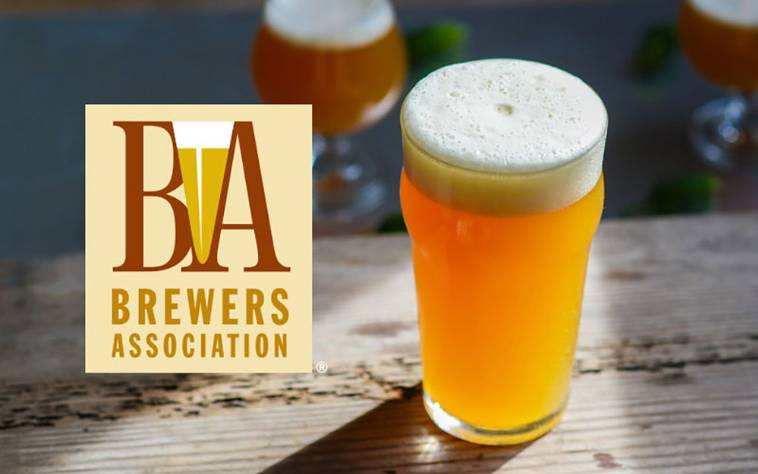
(Photo © Brewers Association)
The Brewers Association, the Boulder, Colorado non-profit that advocates on behalf of craft brewers, just released its midyear numbers for 2024.
And although it wasn’t horrible news, it did point to a continuing decline in the craft beer sector.
Craft beer volume was down around 2%, but at the same time, the number of active craft breweries increased from 9,339 in June 2023 to 9,358 as of June 2024. So there’s that.
And 54% of the breweries surveyed in this survey, reported growth in the first half of 2024 compared to a year ago. So there’s that as well. But that also means that almost half of the respondents were not seeing growth in the first half of 2024.
“While the category continues to struggle to find collective growth, there are still plenty of success stories in the midyear data,” Bart Watson, vice president of strategy and chief economist at the Brewers Association said. “With so much choice in beer and beverage, brewers need to consistently think about how their brands can meet what beer lovers and drinkers are looking for.”
That’s the basic temperament of the Brewers Association’s Midyear survey. It’s not the worst, but it is a mixed bag.
And you can read the BA’s entire press release below…
###
Brewers Association Midyear Survey Sheds Light on the State of the Craft Beer Industry
Boulder, Colo. — The Brewers Association (BA), the trade organization representing small and independent American craft brewers, today released insights from its midyear survey, shedding light on the state of the craft beer industry and providing members with the most up-to-date data.
The number of active craft breweries increased from 9,339 in June 2023 to 9,358 as of June 2024, with the total brewery number also up from 9,456 to 9,528. Midyear 2024 survey results show 54% of surveyed breweries reporting growth in the first half of 2024 compared to a year ago.
However, with beer dollar sales likely more static, there was a continued small decline by volume in the market, estimated to be down 2% compared to 2023. Not a single area by channel or region is driving the decline, with broadly similar trends in packaged and keg distribution, as well as onsite sales.
In breaking down the distribution channels, according to Nielsen IQ (NIQ) scan data, independent craft packaged sales were down 2% year-over-year (YoY), which is stronger than NIQ-defined craft sales. In recent years, distribution has been challenging for many brewers because some distributors and retailers are looking to simplify offerings, and there is increased competition from other product areas, such as ready-to-drink cocktails (RTDs) and other hard innovative beverages. The Beer Purchasers Index, a measure of wholesaler purchasing, has shown craft in contraction for some time.
Reported at-the-brewery sales showed slightly better numbers than distributed craft sales, favoring hospitality-focused businesses, but are no longer a volume growth engine in aggregate, with the median reported growth in our survey showing static volume. There remains high variation by brewery and region, pointing to the importance of local markets and individual business factors. Aggregated point-of-sale (POS) data from Arryved suggests a similar picture, showing revenue per site static and average tabs per site down slightly versus the first half of 2023.
While Alcohol and Tobacco Tax and Trade Bureau (TTB) data is only available through May, it also indicates a continued small decline in keg production. The survey was slightly more positive, showing distributed draught levels static year-over-year.
In addition to a crowded marketplace, brewers continue to navigate a changing economy. While input price growth has moderated, inflation and prices factored heavily into survey comments for both brewery customers and operations. In addition, with so many brewers locally focused, specific local factors including weather, tourism, economic changes, and more, were cited in performance.
“While the category continues to struggle to find collective growth, there are still plenty of success stories in the midyear data,” reflected Bart Watson, vice president of strategy and chief economist at the Brewers Association.
“The success of those brands illustrates that while beer lovers and drinkers have many options, they’re still willing to spend their money on beers and brands that resonate. With so much choice in beer and beverage, brewers need to consistently think about how their brands can meet what beer lovers and drinkers are looking for, both in terms of product offerings and business model.”
 American Craft Beer The Best Craft Beer, Breweries, Bars, Brewpubs, Beer Stores, And Restaurants Serving Serious Beer.
American Craft Beer The Best Craft Beer, Breweries, Bars, Brewpubs, Beer Stores, And Restaurants Serving Serious Beer.
